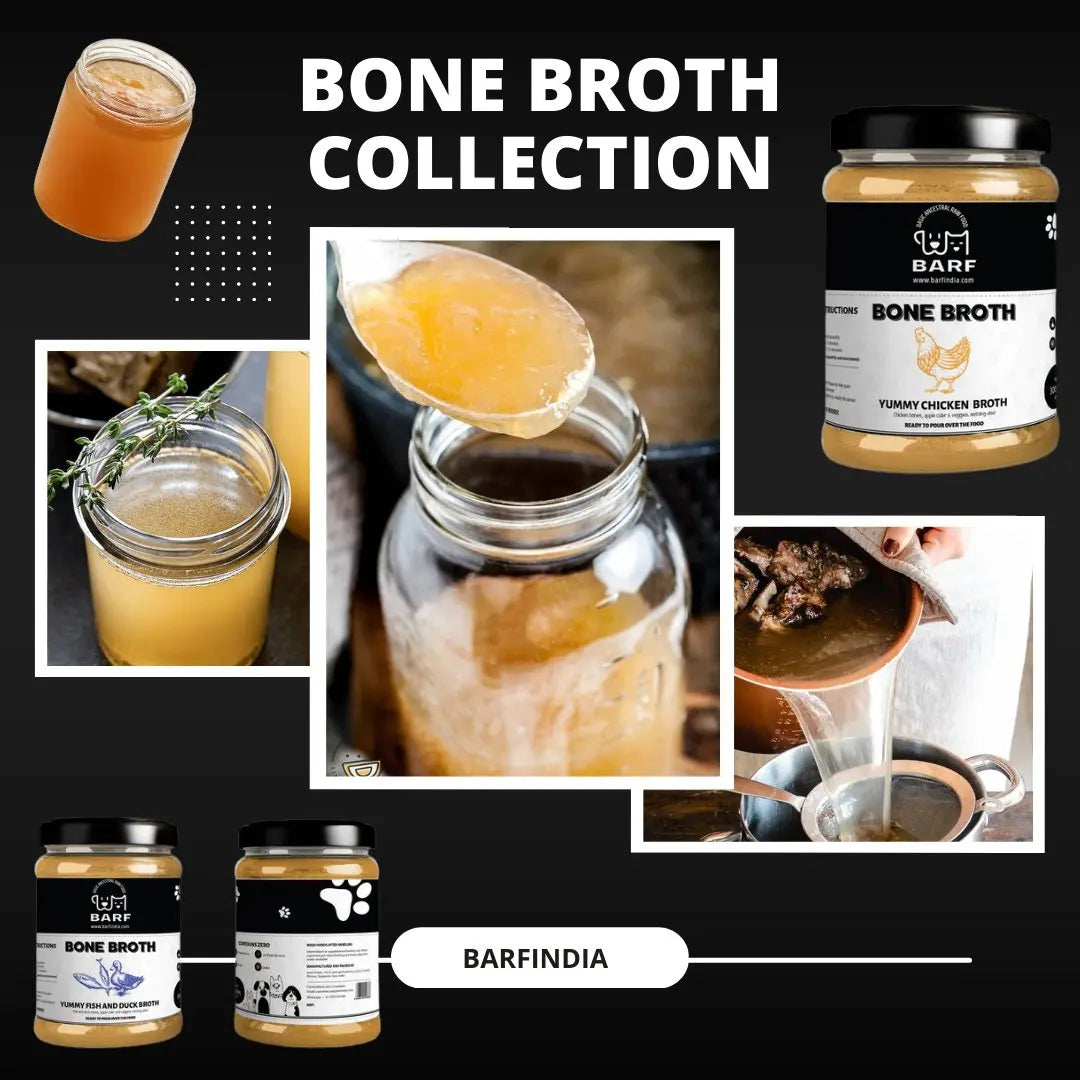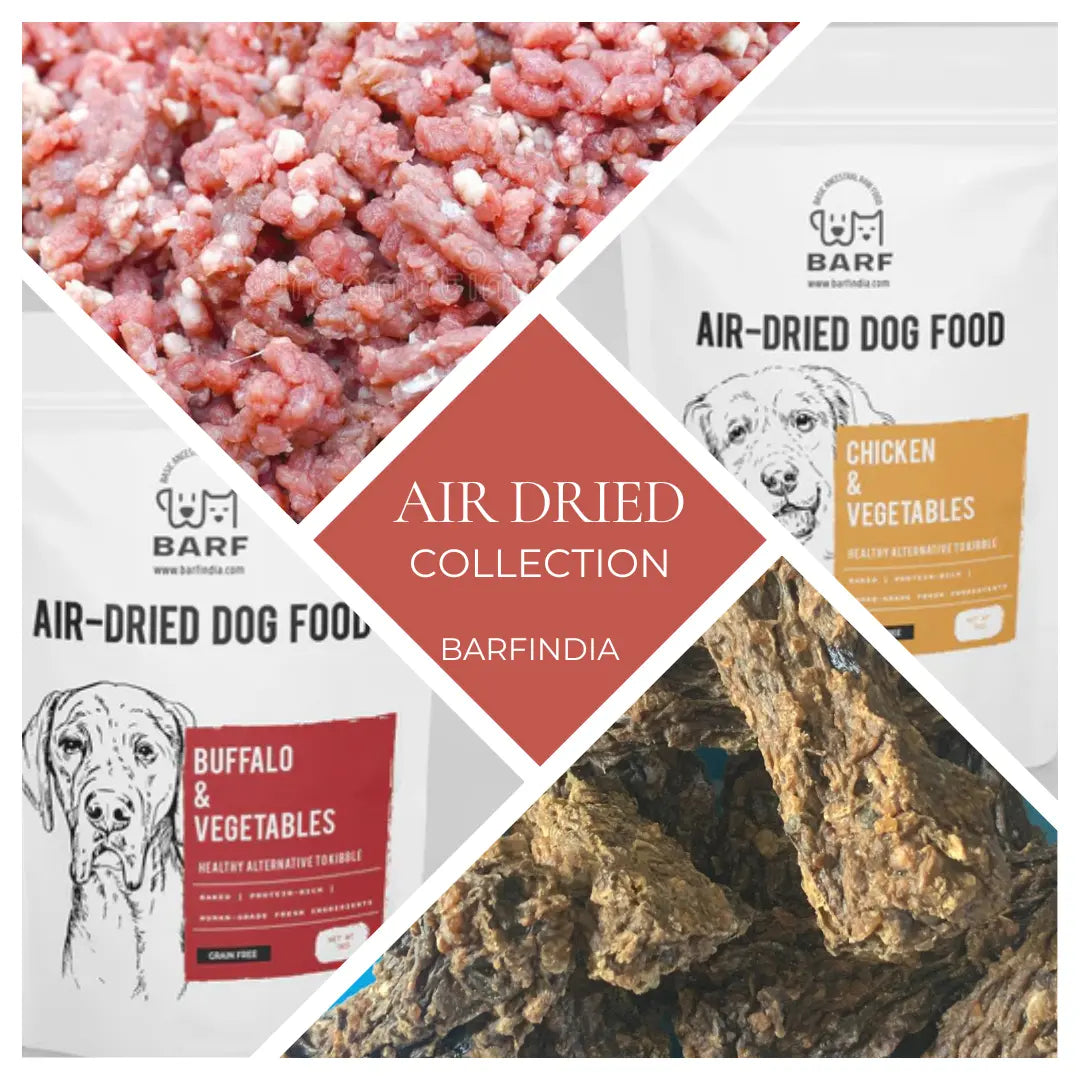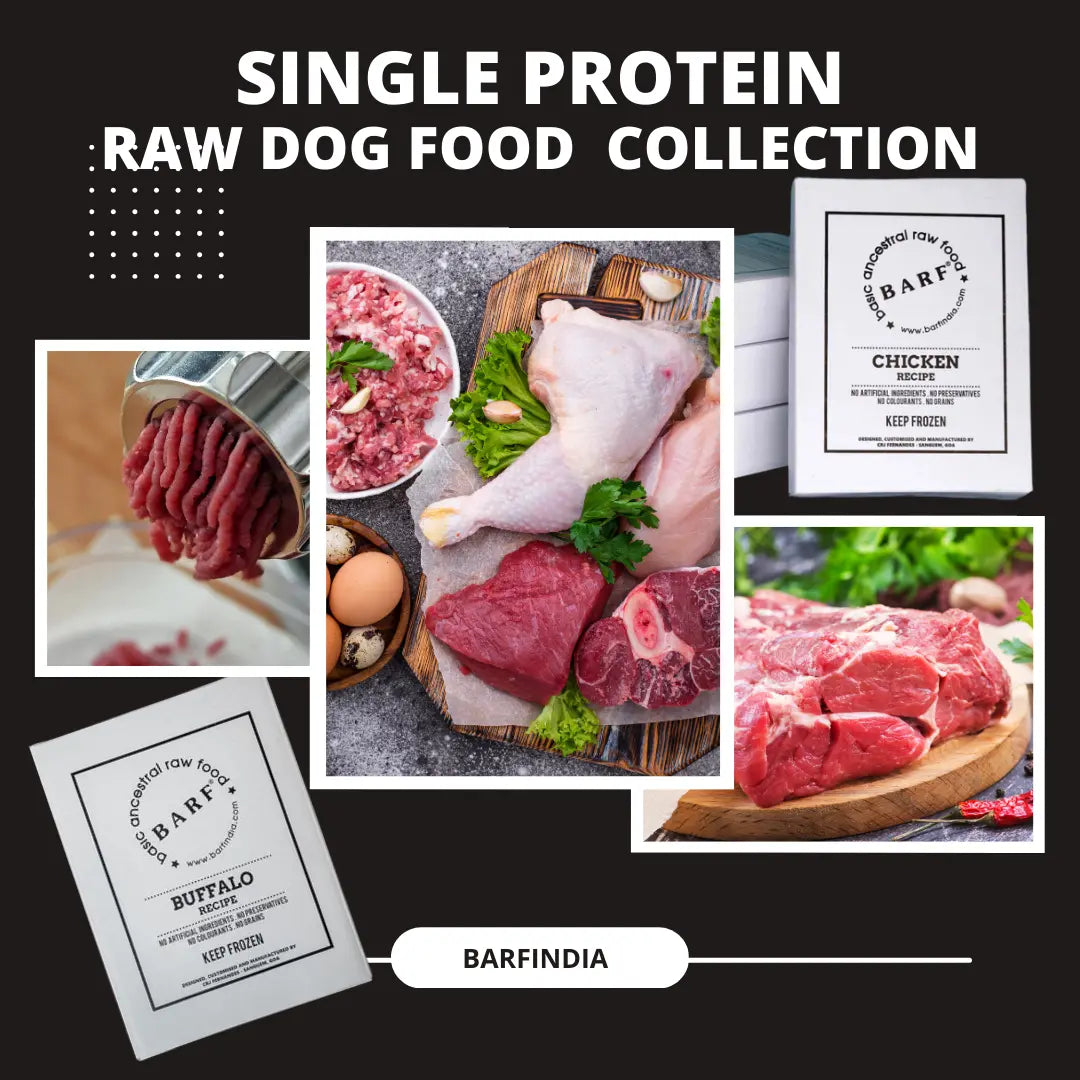Benefits of feeding this super food called pumpkin to your dog?
B.A.R.F. India AdministratorPumpkin for Dogs: Why This Superfood Belongs in Their Bowl
Pumpkin isn’t just a festive vegetable—it’s a nutritional powerhouse that veterinarians increasingly recommend for dogs. Whether you’re feeding kibble, homemade food, or a raw diet, pumpkin is one of those rare additions that checks every box: it’s safe, beneficial, affordable, and delicious.
If you're wondering whether it's worth adding pumpkin to your dog’s diet, here’s a complete breakdown of why this humble veggie deserves a spot in your dog's daily routine.
Pumpkin for Dogs: A Superfood with Serious Benefits
Pumpkin is naturally low in calories but packed with essential nutrients like vitamin A (beta-carotene), potassium, iron, vitamin C, magnesium, and folate. It’s one of the simplest, most effective ways to support your dog’s overall health while adding variety and hydration to their meals.
But here’s the catch—while dogs can safely eat pumpkin, it should never replace a species-appropriate, high-protein diet. Used in moderation, pumpkin is a perfect functional food for dogs.
Top Benefits of Feeding Pumpkin to Dogs
1. Pumpkin Improves Skin and Coat
Thanks to its moisture and vitamin-rich content, pumpkin helps hydrate your dog’s skin, reduce flakiness, and promote a shiny coat. Say goodbye to excessive shedding and hello to that soft, healthy fur.
2. Pumpkin Supports Immune Health
Loaded with vitamins A, C, and E, along with antioxidants, pumpkin helps neutralize free radicals and boost immune response. It can even support resistance to certain cancers.
3. Pumpkin Encourages Healthy Digestion
Whether your dog is constipated or dealing with diarrhea, pumpkin can help. Its high fiber content regulates digestion and keeps your dog’s poop just the way it should be—firm, regular, and easy to pass.
4. Pumpkin Aids in Weight Management
If your dog needs to shed some weight, replacing a small portion of their food with pumpkin adds bulk and fiber without piling on calories. It helps them feel full and satisfied while slimming down.
5. Pumpkin Naturally Hydrates
Dry kibble often leaves dogs dehydrated. Adding pumpkin helps balance that by introducing water-rich content that naturally supports hydration—especially helpful for dogs that don’t drink much water.
6. Pumpkin Promotes Eye Health
Rich in beta-carotene (vitamin A), pumpkin helps maintain good vision and may slow the development of age-related eye problems like night blindness.
7. Pumpkin Seeds Help with Urinary Incontinence
Unlike many other seeds, pumpkin seeds are dog-safe in small amounts. They’re a great source of Omega-3s and antioxidants that help manage urinary incontinence and may assist in breaking down kidney stones.
8. Pumpkin Helps Control Parasites
Pumpkin seeds contain cucurbitacin, a compound toxic to many intestinal parasites. While not a replacement for dewormers, adding ground pumpkin seeds can support parasite control in a natural way.
9. Pumpkin Tastes Delicious
Pumpkin isn’t just healthy—it’s tasty. Most dogs love its creamy, mild sweetness, making it a perfect natural treat or food topper. Add a pinch of cinnamon or honey for an extra special snack.
Pumpkin for Dogs: How Much Is Too Much?
Moderation is key. Too much pumpkin can throw off your dog’s nutritional balance.
Here’s a general guideline:
-
1 tsp per 4 kg of body weight per day is usually safe.
-
If using pumpkin seeds, 1 ground-up seed per 4 kg of body weight.
Always opt for fresh or plain canned pumpkin with no added sugar, salt, or spices. Avoid canned pumpkin pie filling.
Check with your vet before introducing pumpkin if your dog has diabetes or other health conditions.
Pumpkin and BARF: Can It Fit Into a Raw Diet?
If you're following a BARF (Biologically Appropriate Raw Food) diet for your dog, pumpkin can still have a role. BARF diets are meat-heavy, species-appropriate, and based on what dogs evolved to eat in the wild. While meat and organs form the core of BARF, pumpkin can serve as a supportive, functional add-on to help with digestion or hydration.
Just remember:
-
Keep pumpkin within the 5–10% range of the total meal.
-
Don’t replace animal protein with plant food—dogs are carnivores first.
BARF India’s raw recipes already provide all essential nutrients. Adding a spoonful of pumpkin can complement the raw diet when needed, especially during digestion-related issues.
Final Thoughts: Why Pumpkin Deserves a Spot in Your Dog’s Bowl
Pumpkin is a safe, natural, and versatile ingredient with a wide range of health benefits for dogs. Whether you’re looking to improve digestion, support immunity, enhance coat quality, or just give your pooch a tasty snack, pumpkin is a simple solution.
But don’t forget—meat is king in your dog’s diet. Let pumpkin play a supporting role in the bigger picture of species-appropriate nutrition.
So next time you prep your dog’s bowl, consider a scoop of fresh pumpkin—your furry friend will thank you with wagging tails and happy tummies.



